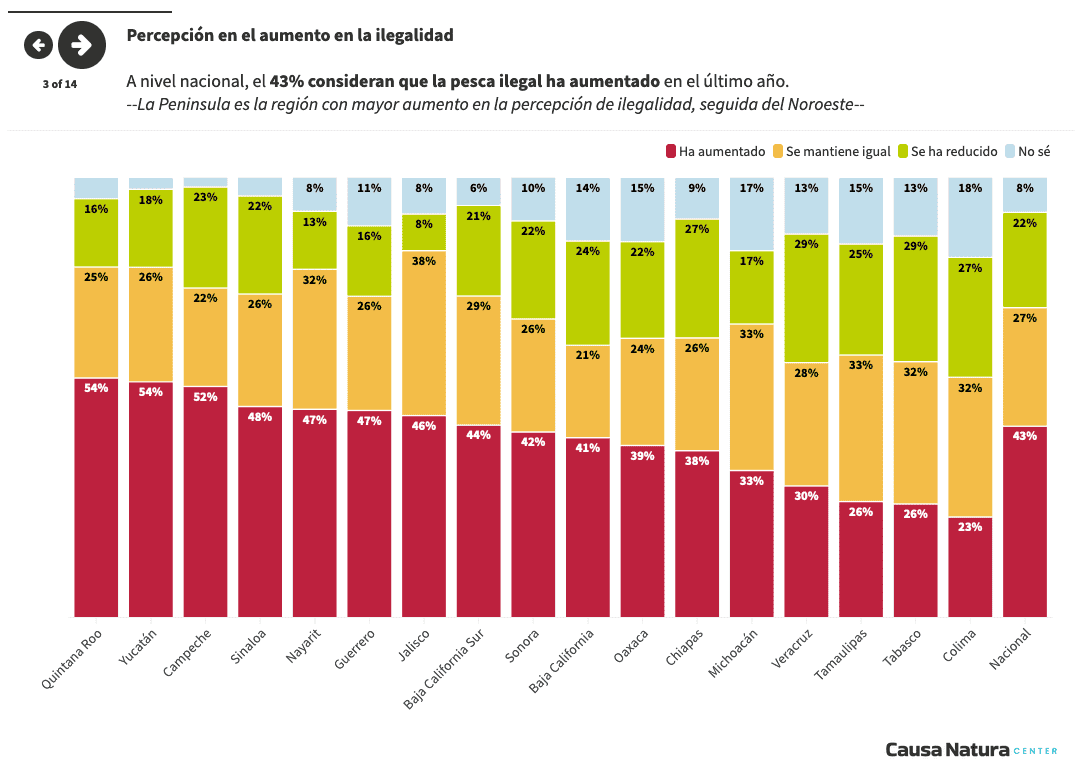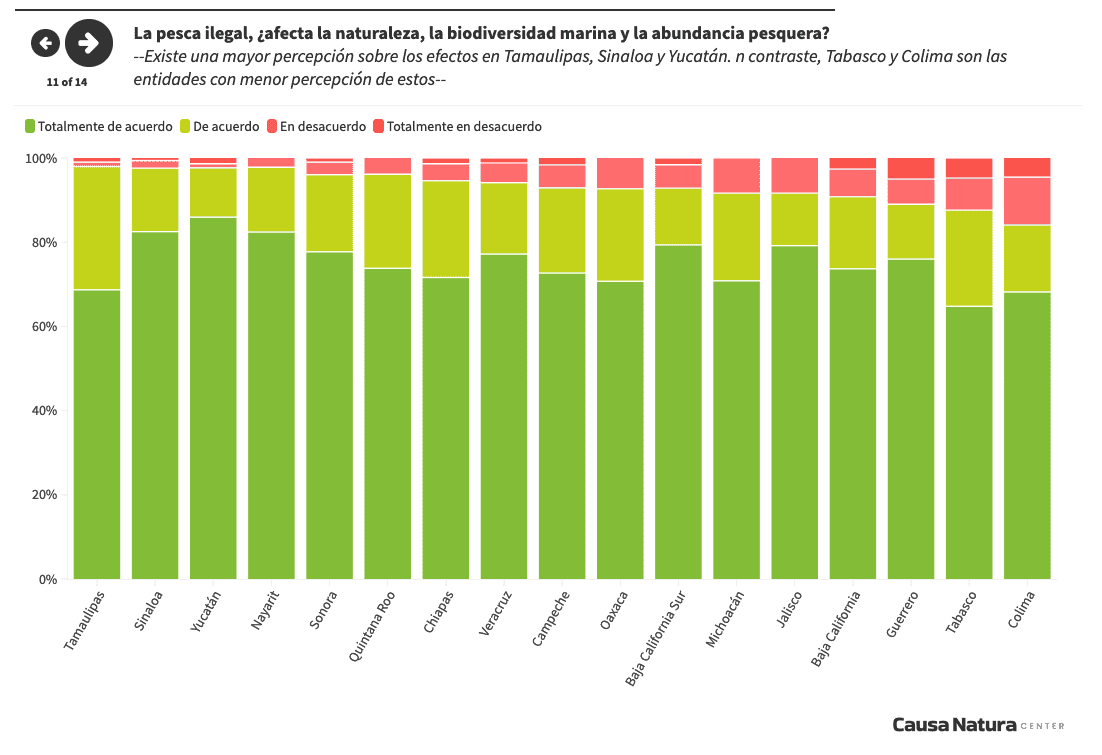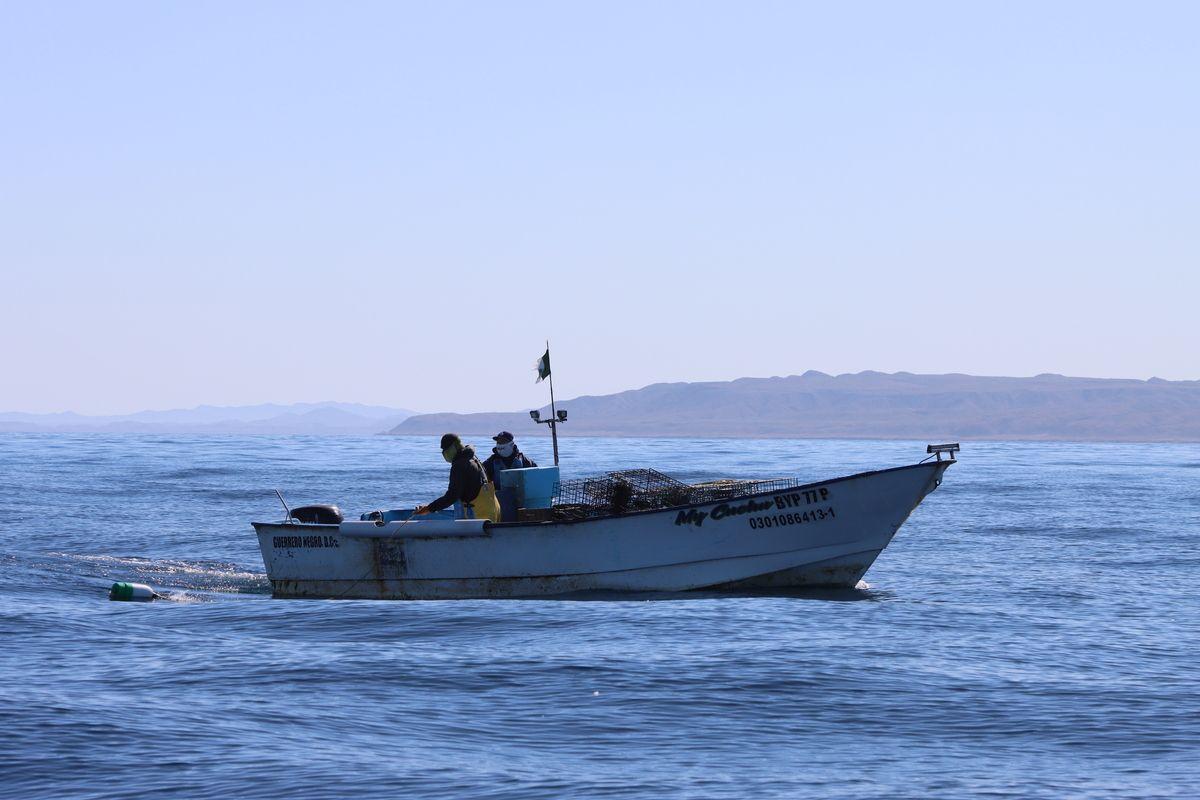78.89% of people engaged in fishing in Mexico consider that illegal activity exists in their communities, according to a survey conducted by the Data Science Unit of Causa Natura Center, in which 2,90 fishing workers distributed in 85 of the country's 164 coastal municipalities participated.
The results show that Campeche is the entity with the highest perception of illegal fishing (86%), while Michoacán has the lowest level of perception (53%).
On the other hand, Quintana Roo, Yucatán and Campeche are the entities in the southeastern peninsula where this perception has increased the most in the last year. While Veracruz (29%) and Tabasco (29%) are the states where respondents reported a greater decrease in illegality in the same period.
“The results are representative at the national and regional levels with a confidence level of 95% and a 5% error,” explains the CN Center Data Science Unit in the survey.

In 2015, the General Commission for Mediterranean Fisheries of the United Nations Food and Agriculture Organization (FAO) proposed the International Day for the Fight against Illegal, Unreported and Unregulated Fishing. According to the agency, on average one out of every five fish caught has an illegal origin.
In the case of Mexico, the National Fisheries and Aquaculture Commission (Conapesca) committed to working with other institutions through inspection in the extraction, processing, transportation, distribution and marketing of fish products. But this has not stopped the reports of illegality that are complemented by the reduction in the budget for surveillance.
This explains why 50% of respondents consider that the cause of poaching is lack of inspection and surveillance, followed by other reasons such as lack of support (36%) and corruption (28%), as well as lack of sanctions (22%), organized crime (18%), poverty (15%), lack of knowledge of the laws by the workers themselves (10%) and very restrictive laws (3%).
Regarding irregularities, 57% of respondents consider that fishing during closed season is the most common offence. This is followed by the use of fishing gear not allowed with 35%, as well as catching without permission or concession; billing or protecting fishing products that do not come from a legal source; fishing in prohibited areas; catching volumes outside the established regulations; and the simulation of sport fishing for commercial purposes.
According to the General Law on Sustainable Fisheries and Aquaculture, penalties for illegal fishing range from 10 to 30,000 days of the current minimum wage. This will depend on the seriousness of the offense; the economic conditions of the offender; the recidivism, if any; the intentional or negligent nature of the conduct; and the benefit directly obtained by the offender.
However, the trust that the Mexican fishing sector has in the authorities is an outstanding debt. In the CN Center survey, 53% have a lot or a little distrust of authority. Jalisco is the entity with the highest trust in contrast to Sonora, which reflects the greatest distrust.

Added to this is the concern about impacts, mainly economic and environmental. On the monetary side, there is a greater perception of the effects in Sinaloa, Yucatán and Sonora. While Tamaulipas, Sinaloa and Yucatán stand out in the effects on marine biodiversity. In the latter case, overexploitation is one of the most documented problems.
Regarding the responsibility they can take as fishermen, the survey is oriented to the knowledge that people have in the sector. 27% of respondents do not know the fishing laws and regulations for their region and town; Tabasco being the entity with the greatest ignorance of the regulations, with 31%.
“The municipalities surveyed were sampled so that they were representative and that there was a variety of these municipalities among the total population, workers in the fishing sector, reported production and its value,” says the survey available on the Causa Natura Center page.



Comentarios (0)